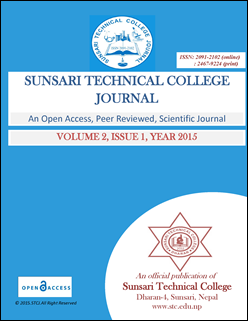Assessment of Prescription Patterns in Hypertensive and Diabetic Patients Visiting Private Tertiary Care Hospital of Dharan Municipality, Nepal
DOI:
https://doi.org/10.3126/stcj.v2i1.14798Keywords:
Drug utilization, prescribing pattern, Antihypertensive, Anti-diabeticsAbstract
This study was conducted to assess the drug prescribing trend of anti-hypertensive and hypoglycemic agents in hypertensive and diabetic patients in tertiary care private Hospital. The study was prospective, cross-sectional and observational study. A total of 100 prescriptions were recorded. 56% were males as compared to 44% females. The age group of the patients varied from 30 to 90 years with majority individual above 50 years of age. 59% patients were hypertensive; 26% patients were diabetic and 15% had both the diseases. For the treatment of HTN, both mono-therapy and combination therapy were followed. In mono-therapy, amlodipine was most commonly prescribed followed by losartan. In combination therapy, a two-drug combination consisting of calcium channel blockers (amlodipine) and diuretics (furosemide /hydrochlorothiazide) were given to the majority of patients, followed by Diuretics and Angiotensin receptor blocker combination. Among diabetic hypertensive, 66.67% of patients were treated with single anti-hypertensive drug and 33.35% of patients were treated with anti-hypertensive drug combinations with oral hypoglycemics. This study showed that calcium channel blockers were the most prescribed antihypertensive agents while biguanides were the mostly prescribed among anti-diabetic agents. Combination therapy was observed in a high percentage of prescriptions in hypertensive patients. Prescribing pattern among antihypertensive showed some dubitable adherences to existing evidence-based JNC guidelines.
Sunsari Technical College Journal 2015, 2(1):44-47




